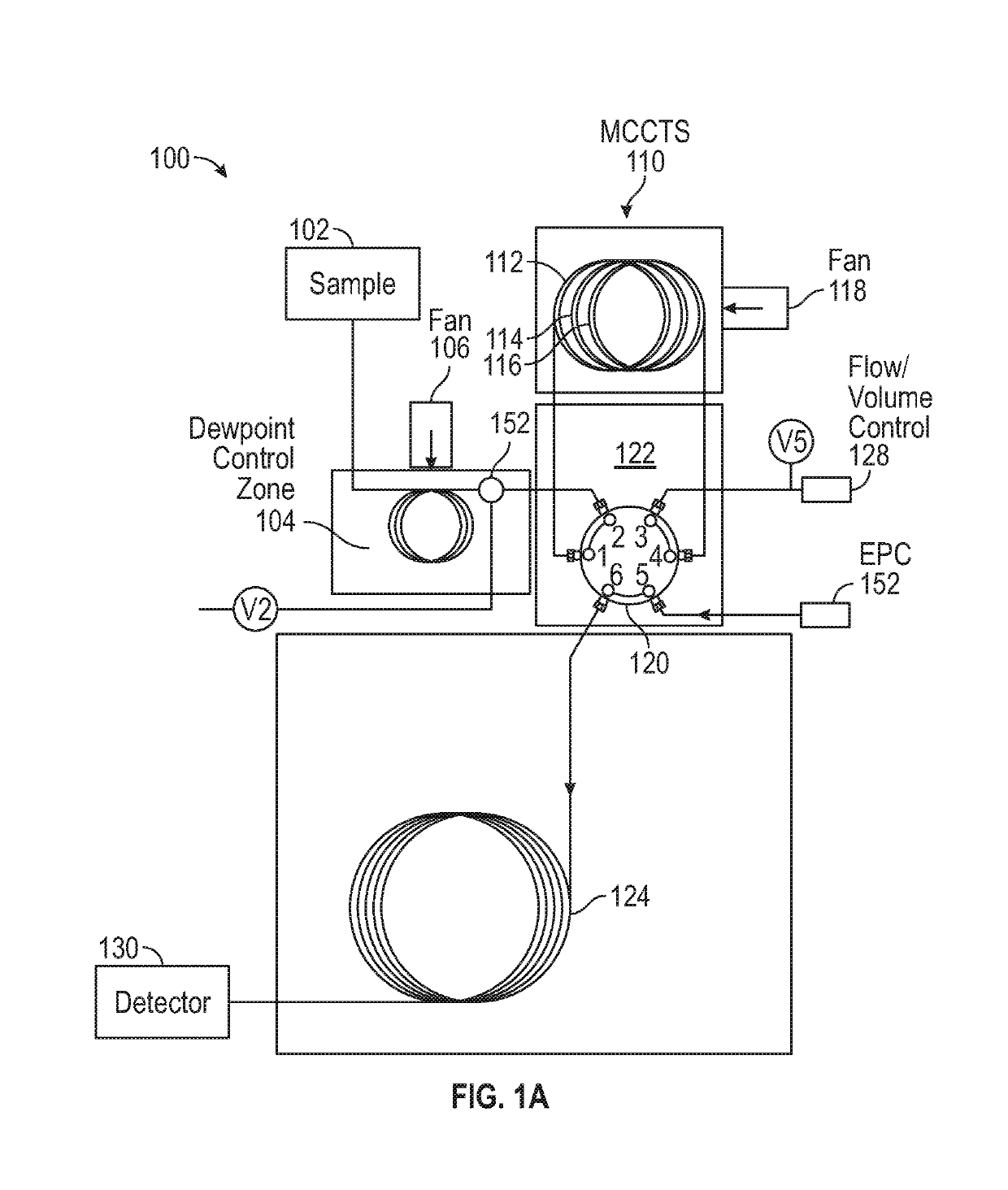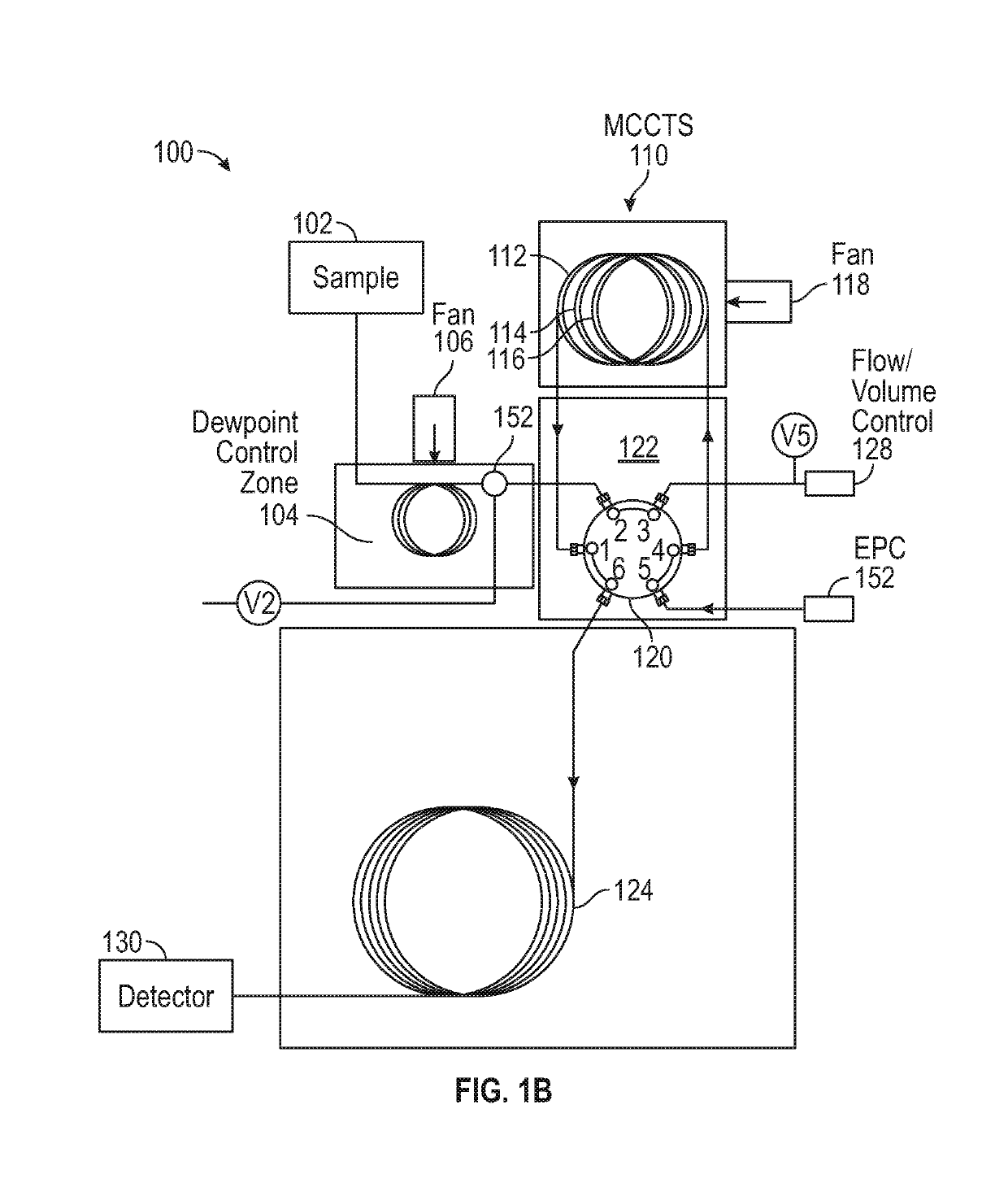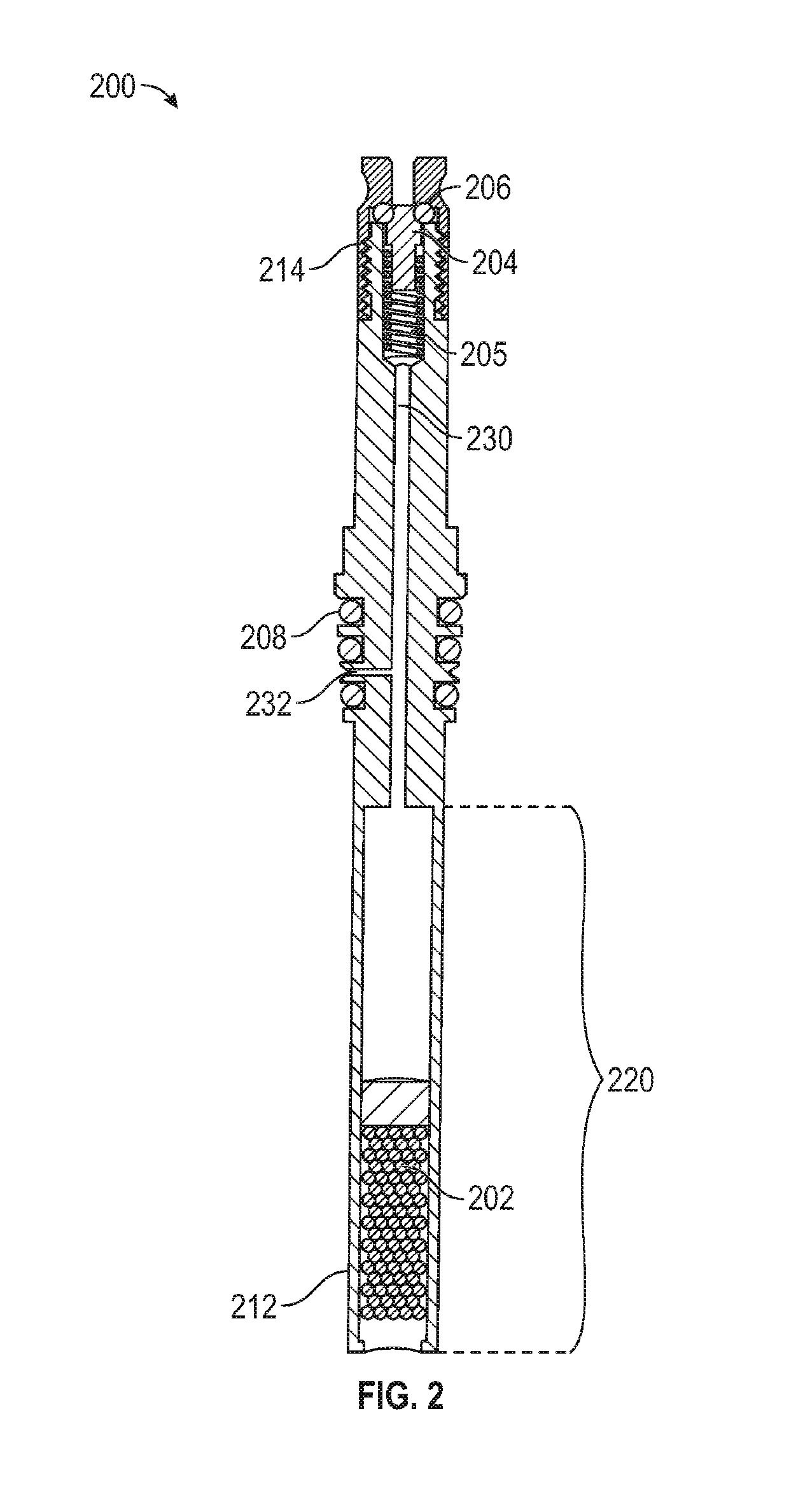Sample preconcentration system and method for use with gas chromatography
a preconcentration system and sample technology, applied in sampling, laboratory glassware, instruments, etc., can solve the problems of affecting productivity, affecting productivity, and affecting the ability of other chemicals to interfere, so as to reduce or minimize bandwidth, reduce or eliminate the chance of water condensation, and increase or maximize sensitivity
- Summary
- Abstract
- Description
- Claims
- Application Information
AI Technical Summary
Benefits of technology
Problems solved by technology
Method used
Image
Examples
Embodiment Construction
[0027]In the following description, reference is made to the accompanying drawings which form a part hereof, and in which it is shown by way of illustration specific examples that can be practiced. It is to be understood that other examples can be used and structural changes can be made without departing from the scope of the examples of the disclosure.
[0028]FIGS. 1A-B illustrate an exemplary system 100 according to some embodiments of the disclosure. System 100 can be used to focus a sample in a way that allows it to be released into 0.1 cc of carrier gas during desorption for rapid, split-less injection into a chemical separation column (e.g., a GC column) while eliminating water and any carbon dioxide in the sample prior to injection.
[0029]As shown in FIGS. 1A-1B, the system 100 optionally includes a sample 102, a dewpoint control zone 104, a fan 106 proximate to the dewpoint control zone 104, a six-position rotary valve 120 situated in heater 122, a multi-capillary column trappi...
PUM
 Login to View More
Login to View More Abstract
Description
Claims
Application Information
 Login to View More
Login to View More - R&D
- Intellectual Property
- Life Sciences
- Materials
- Tech Scout
- Unparalleled Data Quality
- Higher Quality Content
- 60% Fewer Hallucinations
Browse by: Latest US Patents, China's latest patents, Technical Efficacy Thesaurus, Application Domain, Technology Topic, Popular Technical Reports.
© 2025 PatSnap. All rights reserved.Legal|Privacy policy|Modern Slavery Act Transparency Statement|Sitemap|About US| Contact US: help@patsnap.com



